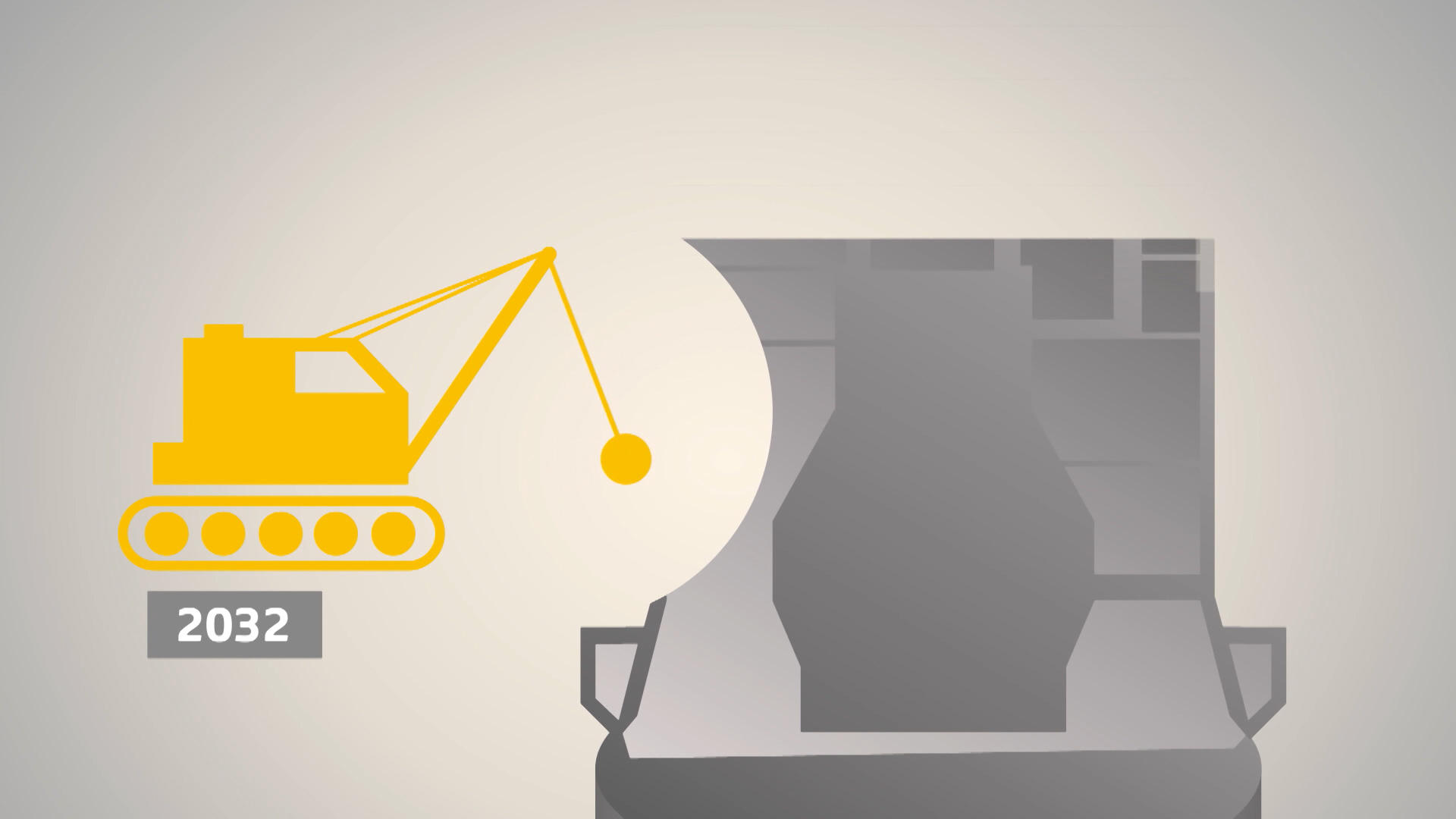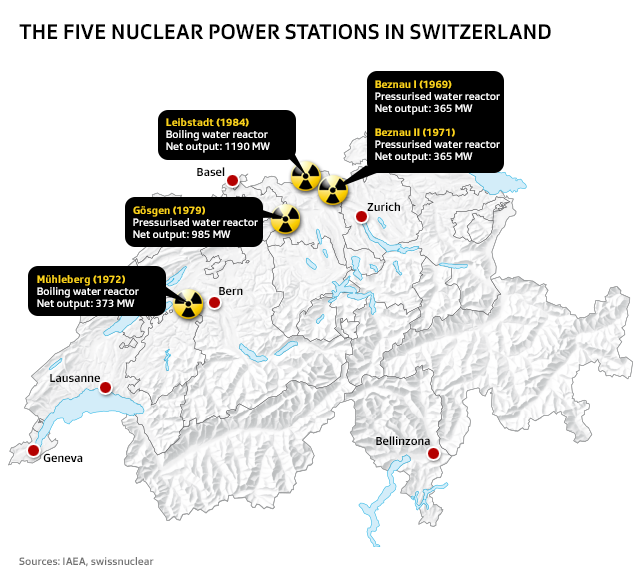
How Switzerland is dismantling its first nuclear power station
Switzerland is switching off its first nuclear power station on Friday. However, pressing the “off” button is just the beginning of an estimated 15-year decommissioning process.
Taking the 47-year-old Mühleberg power plant off the grid isn’t a problem for Bern-based energy company BKW GroupExternal link as the plant was shut down every year for inspection work.
Since electricity is no longer being produced, the dismantling and destruction of equipment used solely for this purpose, such as turbines, generators and condensers, can be started straight away. The central building will then be prepared for the dismantling, decontamination and packaging of material.

More
Decommissioning a nuclear power plant
The hard work will start in 2020. After the reactor has been shut down, the power plant will be in the same state as during the annual inspection. However, the lid of the reactor pressure vessel will remain closed for another three months. During this time the radioactivity level will drop to a thousandth of what it is when the plant is in operation.
After that, the heart of the reactor will be exposed: the fuel rods. As during the annual inspections these will be placed in a separate storage pool where they will be kept for several years so the radiation can subside.
By 2024 all fuel rods will have been transported to the central interim storage facility for high-level radioactive waste in Würenlingen in northern Switzerland. According to the operator, 98% of the radioactivity will have left the Mühleberg nuclear power plant.
Everything in the reactor building will then be taken apart under water via remote control.
By 2030 those enclosures belonging to the nuclear part of the plant will be demolished.
Waste disposal
Thousands of tonnes of material must then be checked for radiation, crushed and sorted. The material will be divided into three groups: radioactive waste; material that needs to be decontaminated; and clean, recyclable material.
A total of 6,000 tonnes of material (less than 2% of total waste) will be prepared as radioactive waste for deep geological disposal. The other 98% (200,000 tonnes) will be either recycled or disposed of as construction waste.
Until it can be proved that there is no longer a radioactive source of danger on the site, the dismantling will remain under the supervision of the Federal Nuclear Safety Inspectorate (ENSIExternal link).
Buildings that are no longer needed will be demolished between 2030 and 2034. After 2034 the area will be usable for other purposes.

(Translated from German by Thomas Stephens)

In compliance with the JTI standards
More: SWI swissinfo.ch certified by the Journalism Trust Initiative





























You can find an overview of ongoing debates with our journalists here . Please join us!
If you want to start a conversation about a topic raised in this article or want to report factual errors, email us at english@swissinfo.ch.